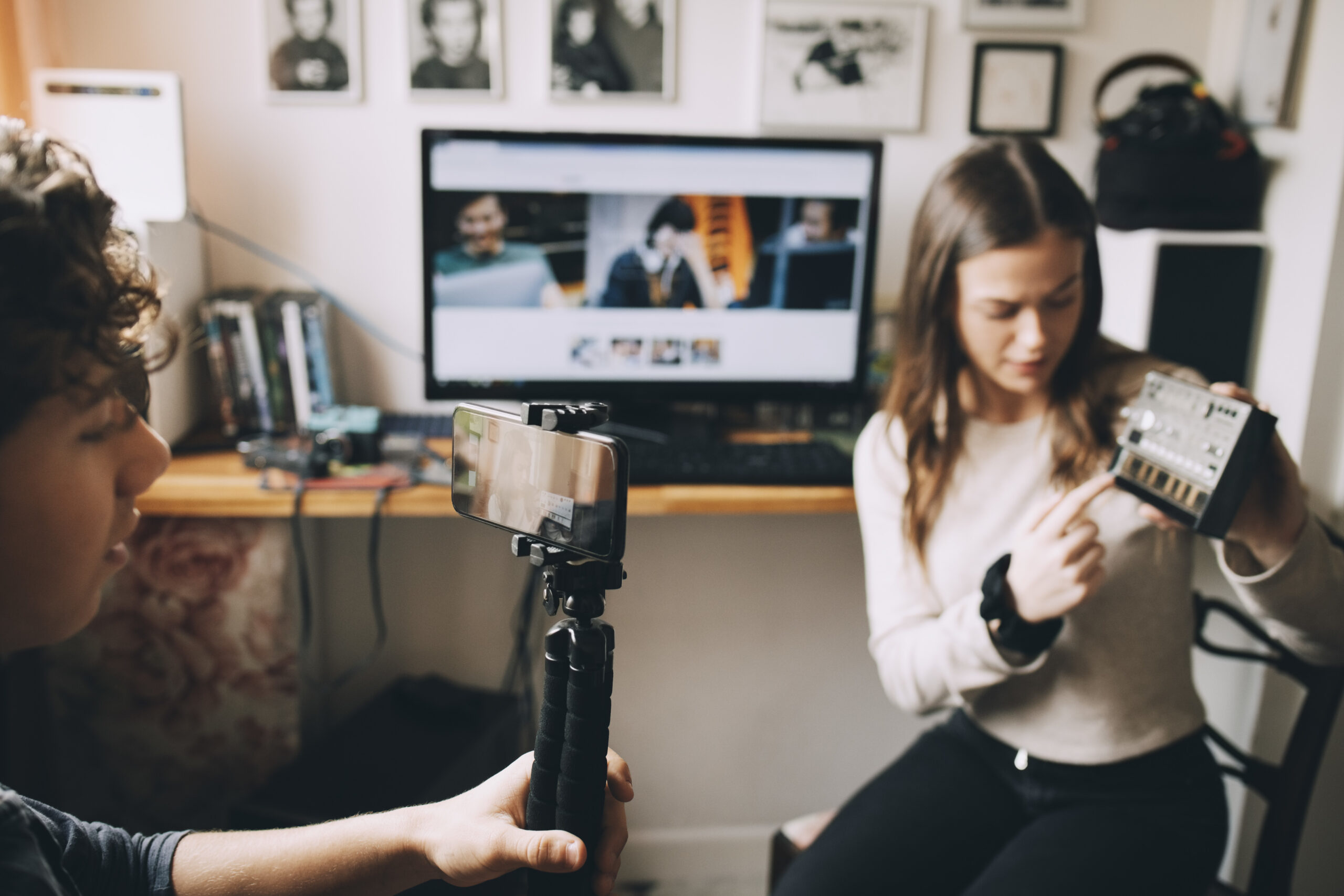Phone cameras have changed a lot since they popped up in flip phones in the early aughts. Back then, you were lucky if you stumbled into taking a picture that wasn’t a blown-out pixelated mess. These days, the technology has gotten so good that there are annual photography contests awarding prizes to the best images captured using a mobile phone.
But you don’t have to be an expert-level photographer to get the great phone pics. Sure, you can break out a tripod and lighting equipment if you really want to. But the secret to getting good phone pictures is less about using professional tips and tricks, and more about working with what you’ve got.
Ready to get a great phone picture? Here’s some tips to help you out.
Do a quick clean-up
Despite your best efforts, chances are your phone is a grimy mess. It happens—don’t beat yourself up for it. But before you start snapping phone photos, make sure your phone is clean. And that means giving it a good wipe-down front and back, so you’ll have a clear view on your screen, and you’re doubly sure there isn’t a thumbprint on your lens that will ruin your artistic moment.
Make use of the grid setting
You may think you have your desired image centered, but to make doubly sure, if you’re device has this feature, enable the grid setting before you take your phone pic. It makes a grid appear on your screen that can help you line things up and see more clearly what you’re framing and how (don’t worry, the grid doesn’t show up in your final phone picture). It’s easy to turn it on and off—just go to your phone’s camera app settings and you should be able to activate it with the click of a button. 
Get in focus
Unless you’re going super Avant garde artsy with your phone photos, make sure your image will be in focus. Some phones have auto focus and will show you when your image is clear—but sometimes, the setting can be persnickety and focus on something in the background rather than what you want to turn your lens to. This is why it’s just as important to determine the focus of your image, too—you don’t want the image to focus on someone meandering in the park when you’re aiming to get a phone pic of your dog wearing a cute hat while out on his walk. If repositioning your phone or getting close to the subject doesn’t help, you’ll want to fiddle with your focus settings until your intended subject is the center of attention.
Don’t touch the zoom
Just don’t. Why? Because you run the risk of taking a phone picture that’s grainy, fuzzy, and just plain bad. If you want to get closer to your subject matter, get physically closer to your subject matter. And if you really want to take a phone pic from further away, consider splitting the difference so it’s not all zoom, all the time. The more you can set yourself up for image success in the beginning, the better your phone picture will be in the end.
Consider your lighting
In my opinion, natural light is the way to go. Some mobile phones know how to optimize that light so you get the best phone pic possible. There’s no harm in using a flash, but if you’re not adept at using image editing software, you run the risk of creating an image that’s blown out or all flare—especially in night shots. To help create the proper light composition for your phone picture, make sure to set your exposure so the image isn’t too dark or too light. Some phones will let you make this adjustment on your screen as you’re setting up your shot.
Hold it!
Now that you’ve got your shot set up, don’t. Move. A. Muscle. And that goes double for your phone pic subject matter (which may be a challenge if you’re taking a picture of that aforementioned dog). A slight tilt to the left, moving your arm right as you take a shot, stifling a violent sneeze as you’re just about to snap… even the slightest movement can throw your image out of whack. You don’t necessarily have to turn yourself into a statue, but remember that the more you can minimize movement on both sides, the clearer, more in-focus phone pic you’ll likely have (unless your goal is to take pictures while you and your friends are dancing at a club—then all bets are off).

Try a timer
Want to get in the phone pic yourself? Some phones have a timer option so you can compose your shot, set your timer, get yourself into place, and then voila! Instant self-portrait. That said, you’ll want to make sure you set up your phone so you don’t wind up with a phone picture where half of your head is missing. You can set it up on a table or shelf, prop it up against a book, or use a phone stand to hold it in place. Or, you can get fancy and spring for a tripod—it might be worth it if you want to take your selfie game to the next level.
Find different moments
Sure, composed phone pics are fun. But the more comfortable you get with your phone picture settings, and the more experience you get in taking on the phone pictures, the more comfortable you’ll feel taking pics on the fly. Take shots while you’re traveling in a car, candids of your friends when they don’t think you’re looking, alternate takes of the composed phone pic you just took, images of street scenes while you’re meandering at home or abroad… whatever floats your fancy. It all helps you develop an eye.
Play around with options
Similarly, you can also create different moods in a lot of different ways. You can play with balance in your phone pic, or try some asymmetry if that brings your vision to life. Negative space is also helpful to create an impromptu frame for something you want to focus on, as can a change in perspective—what looks one way on the ground may look entirely different from the top of a ladder. Playing with reflections can also create some striking phone pics, whether you use a mirror or a puddle on the ground. And of course, your phone may have a variety of filters and settings that can have a major impact on the final product you aim to create.
Keep snapping
And whatever you do, don’t stop. The best way to get good at phone pictures is to keep taking them, keep experimenting, and keep finding moments that inspire your artistry. And who knows? Maybe your next phone picture will win one of those contests.
This article is AT&T sponsored content written by Carly Milne, a TechBuzz contributor. The statements in this article are her own and don’t necessarily represent the positions, strategies, or opinions of AT&T.





